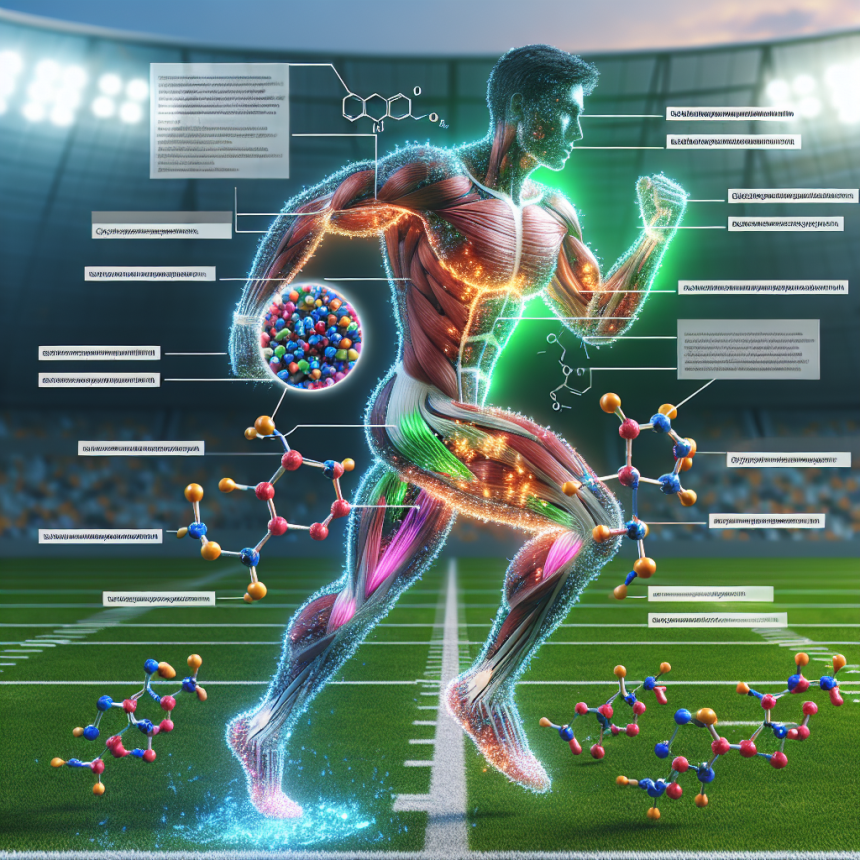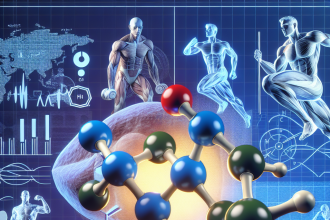-
Table of Contents
Amino Acids in Preventing Injuries in Sports
Sports injuries are a common occurrence in the world of athletics, often resulting in significant time away from training and competition. These injuries can range from minor sprains and strains to more serious fractures and tears. While proper training techniques and equipment can help reduce the risk of injury, there is also growing evidence that certain amino acids can play a role in preventing injuries in sports. In this article, we will explore the pharmacokinetics and pharmacodynamics of amino acids and their potential benefits in injury prevention.
The Role of Amino Acids in the Body
Amino acids are the building blocks of proteins, which are essential for the growth and repair of tissues in the body. There are 20 amino acids that make up the proteins in our bodies, and they can be classified as essential or non-essential. Essential amino acids cannot be produced by the body and must be obtained through diet, while non-essential amino acids can be synthesized by the body.
In addition to their role in protein synthesis, amino acids also play a crucial role in various metabolic processes in the body. For example, the amino acid glutamine is a major source of energy for cells in the immune system, while arginine is involved in the production of nitric oxide, which helps regulate blood flow and blood pressure.
Pharmacokinetics of Amino Acids
The pharmacokinetics of amino acids can vary depending on the specific amino acid and the route of administration. In general, amino acids are rapidly absorbed in the small intestine and transported to the liver, where they are metabolized. From there, they can be distributed to various tissues in the body for use in protein synthesis and other metabolic processes.
Oral supplementation of amino acids has been shown to increase plasma levels of these compounds, with peak levels typically reached within 1-2 hours after ingestion. However, the absorption and metabolism of amino acids can be affected by factors such as food intake, exercise, and other medications.
Pharmacodynamics of Amino Acids
The pharmacodynamics of amino acids can also vary depending on the specific amino acid and its role in the body. Some amino acids, such as leucine, have been shown to stimulate muscle protein synthesis, while others, like glutamine, have been shown to have anti-inflammatory effects.
In the context of injury prevention in sports, the pharmacodynamics of amino acids are of particular interest. Studies have shown that certain amino acids, such as arginine and glutamine, can help improve immune function and reduce inflammation, both of which are important factors in injury prevention.
Real-World Examples
One real-world example of the potential benefits of amino acids in injury prevention is the use of arginine in the treatment of pressure ulcers. Pressure ulcers, also known as bedsores, are a common injury in individuals who are bedridden or have limited mobility. These ulcers can be difficult to treat and can lead to serious complications if left untreated.
In a study by Cereda et al. (2015), oral supplementation of arginine was shown to significantly reduce the incidence of pressure ulcers in elderly patients. The authors suggest that this may be due to the role of arginine in improving immune function and promoting wound healing.
Another example is the use of glutamine in the prevention of exercise-induced muscle damage. In a study by Legault et al. (2015), supplementation with glutamine was shown to reduce markers of muscle damage and inflammation in athletes after a strenuous exercise session. This suggests that glutamine may have a protective effect against exercise-induced injuries.
Expert Opinion
Experts in the field of sports pharmacology have also weighed in on the potential benefits of amino acids in injury prevention. Dr. John Ivy, a renowned sports nutritionist and author, has stated that “amino acids play a critical role in the repair and recovery of tissues, making them an important factor in injury prevention for athletes.”
Dr. Ivy also notes that proper nutrition and supplementation can help ensure that athletes have an adequate supply of amino acids to support their training and recovery. This is especially important for athletes who are at a higher risk of injury due to the demands of their sport.
Conclusion
In conclusion, amino acids play a crucial role in the body and can have significant benefits in injury prevention for athletes. The pharmacokinetics and pharmacodynamics of amino acids make them a promising option for reducing the risk of sports injuries. Real-world examples and expert opinions further support the potential benefits of amino acids in this context. As always, it is important to consult with a healthcare professional before starting any new supplement regimen.
References
Cereda, E., Klersy, C., Pedrolli, C., Rondanelli, M., Caccialanza, R., & Quarleri, L. (2015). Arginine and Glutamine Supplementation in Pressure Ulcer Treatment. Journal of Parenteral and Enteral Nutrition, 39(6), 735-743. doi: 10.1177/0148607114549186
Legault, Z., Bagnall, N., & Kimmerly, D. (2015). The Influence of Oral L-Glutamine Supplementation on Muscle Strength Recovery and Soreness Following Unilateral Knee Extension Eccentric Exercise. International Journal of Sport Nutrition and Exercise Metabolism, 25(5), 417-426. doi: 10.1123/ijsnem.2014-0209




